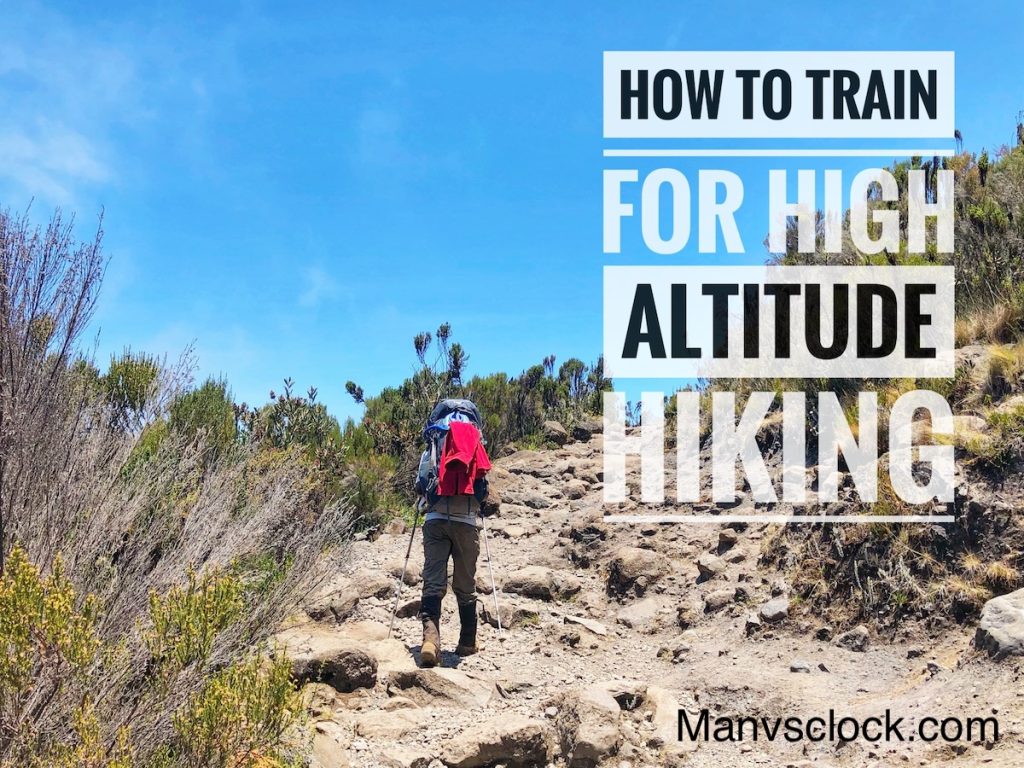Learning how to train for high-altitude hiking is one of the smartest choices that you can make if you truly are committed to undertaking this often physically and emotionally demanding challenge.
On this blog over the years, I have documented a nice handful of successful high-altitude hikes/climbs in all corners of the world, however, there was one high-altitude failure in particular that left me in such a wreck, so I do feel that I am very well-versed to write this article.
I have witnessed the good, bad and ugly in other people and also myself while trying to topple massive mountains.
My aim here is to have you, the reader, fully equipped for your upcoming high-altitude hike so you have every bit of chance of avoiding altitude sickness and successfully summiting your mountain of choice.
Dangers of Not Being Ready For Training For High Altitude

Not being adequately prepared for high-altitude training can lead to several significant risks and dangers. These include:
- Altitude Sickness: Also known as Acute Mountain Sickness (AMS), this condition is caused by rapid exposure to low amounts of oxygen at high elevations. Symptoms can range from mild (headaches, nausea, dizziness) to severe and life-threatening HACE (High Altitude Cerebral Edema) which is caused by swelling of the brain, or HAPE (High Altitude Pulmonary Edema) where there is a build-up of fluid in the lungs.
- Hypoxia: At high altitudes, the decreased oxygen levels can lead to hypoxia, where the body’s tissues don’t receive enough oxygen. This can impair cognitive and physical performance and in severe cases, can be fatal.
- Physical Strain and Exhaustion: High-altitude environments can be extremely taxing on the body, leading to quicker fatigue, dehydration, and muscle weakness. Without proper training, this can lead to accidents or inability to continue.
- Decreased Judgment and Cognitive Ability: Reduced oxygen levels can impair judgment and decision-making abilities, increasing the risk of making poor choices that could lead to accidents.
- Respiratory and Cardiovascular Stress: The body has to work harder to breathe and circulate blood at high altitudes. This can exacerbate underlying health conditions, especially in the heart and lungs.
- Risk of Injury: Due to the challenging terrain and decreased physical performance, falls and injuries are increased.
Now here’s the kicker; you can not 100% prepare for altitude sickness. What I mean by this is there is no absolute guarantee of preventing it, as this mysterious beast is often a lottery; sometimes you win and don’t get it and like how I found out in Argentina (and also a bit in Russia) you will lose.
Don’t let that get you down though, there are still a lot of things that you can and should do to make sure you have the best fighting chance of not falling prey to altitude sickness, so without much further ado let’s discuss how to train for high altitude hiking so that you are fully prepared and primed to storm to the top of that mountain!
What is High Altitude?
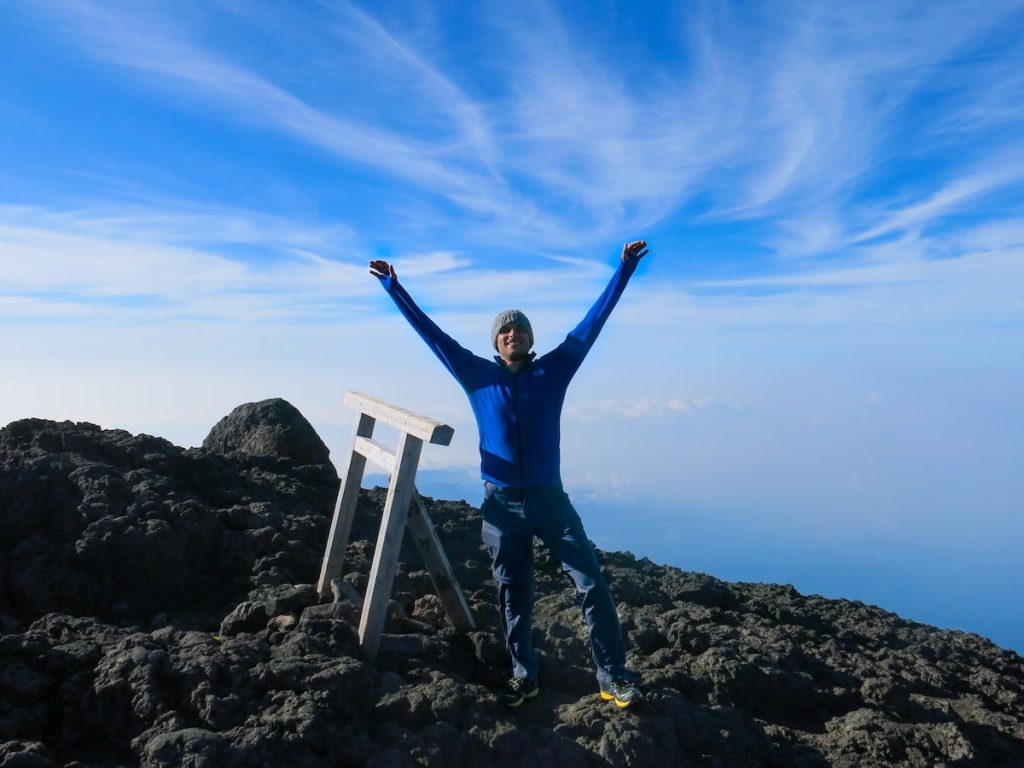
“High altitude” in hiking typically refers to elevations above 2,500 meters (8,200 feet). The intensity of the high altitude classification can vary depending on the context and the geographical region.
Here are the general classifications of high altitude:
- High Altitude: 2,500 to 3,500 meters (8,200 to 11,500 feet).
- Very High Altitude: 3,500 to 5,500 meters (11,500 to 18,000 feet).
- Extreme Altitude: Above 5,500 meters (18,000 feet).
Mount Fuji of Japan would squeeze into the high altitude category at 3,776 metres. You can read about my experience with that beauty if you want to know how hard is it to climb Mount Fuji.
Mont Blanc, the largest mountain in France and Western Europe would be classified as very high altitude of 4,808 metres. You can read about my Mont Blanc climb experience, at this stage in my life I was so well-trained and primed for high-altitude hiking that I instantly flew to Tanzania after the summit to climb Kilimanjaro in just 4 days, which would class as an extreme altitude mountain (albeit much less technical than Mont Blanc).
(Check out my beginner’s guide to climbing Kilimanjaro if you’re interested).
The tallest mountain in the world, needing no introduction, Mount Everest lands on the extreme side of this spectrum. Other less intimidating and well-known mountains in this classification would be Mount Elbrus, Denali and Mount Aconcagua, the tallest mountain outside of the Himalayas.
My Experience Training at High Altitude
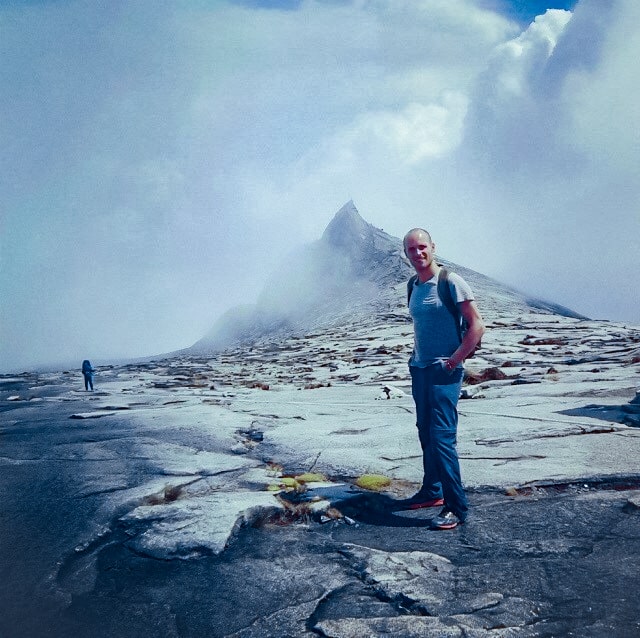
To be frank, I had no idea at all about high-altitude hiking, what it entailed, or how to train for it when I first started this chapter of my life.
My debut high-altitude hike was Mount Fuji, which was done on a whim while bouncing between Tokyo and Kyoto, it was harder than it should have been as I wasn’t primed but I did it one day, known as “the bullet climb challenge.”
Next up was climbing Mount Kinabalu in Borneo (4.095 metres). I hiked it with a Filipina lady who I met while swimming whale sharks in the Philippines and she was fit as a fiddle, much fitter than myself who has been partying around the world for 7 years!
Alas, we summited together in one day and my ears pricked up when my best mate Johnny announced that he was gunning for the Seven Summits challenge; the 7 tallest mountains on every continent.
I joined him on the mountains mentioned above; Mont Blanc, Mount Elbrus, Puncak Jaya and Aconacagua on two occasions with the second one humbling me when I cruelly collapsed with only 4 hours from the summit to spare.
To reiterate; with all this being said, I am certainly well-equipped to discuss how to train for high-altitude hiking (and how NOT to!)
So let’s dig in and discuss why and how to train for high-altitude hiking.
Aerobic Training

Aerobic training should be the cornerstone of your training for high-altitude hiking, your heart is going to be working overtime while you’re up there so make sure you are training it to withstand the harsh conditions that your body is about to endure.
My aerobic training consisted of running long distances, hiking hills as much as possible and hill sprints. I’m not a big fan of group classes but if you are then I suggest anything aerobic-based, particularly those that give you both an aerobic and anaerobic workout in one (such as F45, Crossfit etc).
The physiological benefits of having good cardiovascular endurance have been well-known for a long time now, but in terms of high-altitude training, take heed of the following benefits in incorporating aerobic exercise into your training schedule.
- Increased Cardiovascular Efficiency: Aerobic exercise strengthens the heart and improves the efficiency of the cardiovascular system. This is crucial at high altitudes where the heart has to work harder to deliver oxygen to the muscles and organs due to the lower oxygen levels in the air.
- Enhanced Oxygen Utilisation: Regular aerobic training improves the body’s ability to use oxygen efficiently. At high altitudes, where oxygen is scarce, having a body that can maximise oxygen uptake and utilisation is a significant advantage.
- Improved Respiratory Function: Aerobic exercise enhances lung capacity and respiratory efficiency, which is beneficial in environments where breathing can be more difficult due to thin air.
- Stamina and Endurance: High-altitude hiking often involves long hours of trekking under challenging conditions. Aerobic training increases stamina and endurance, allowing hikers to sustain physical activity for extended periods without excessive fatigue.
- Faster Acclimatisation: Aerobically fit Individuals often acclimatise to high altitudes more quickly. While fitness does not prevent altitude sickness, it can help the body adjust more effectively to the decreased oxygen availability.
- Reduced Fatigue and Muscle Efficiency: Aerobic fitness helps in reducing the overall fatigue levels during hiking. Efficient muscles use less energy and oxygen, which is crucial when both are in limited supply.
- Weight Management: Aerobic training helps in maintaining a healthy weight. Being at an optimal weight reduces the physical strain during hiking, making it easier to move and manage the body at higher altitudes.
- Mental Health and Stress Reduction: Aerobic exercise is known for reducing stress and improving mental health. This can be particularly beneficial in dealing with the psychological challenges of high-altitude hiking, such as dealing with discomfort, fear, and the mental demands of navigating difficult terrain.
Do not scrimp on your cardio if you are training for high altitude training, this should be the number one priority.
Strength Training

Rule number two when learning how to train for high-altitude hiking after cardio is an absolute for me; you must make time to strength train by lifting weights and or bodyweight/callisthenics exercise.
Even if you don’t like it, especially if you don’t like it because if you don’t like it, there is every bit of chance that you do not do it, and if you do not regularly do it then that means you have a weak, soft body that is not strong and adaptable for high altitude hiking.
I spent way too much time getting caught up in minutiae such as overly researching the best time to climb Aconcagua and just banging out ungodly amounts of cardio every day that I barely strength trained at all and it negatively affected my performance.
I am, of course, speaking from experience and I learned the hard way. I only just managed to clamber up those first few mountains and I thought that being a cardio kid was enough. I found out during the savage sand dunes of the Sahara Desert during my Marathon des Sables experience and also on Mount Elbrus that this was not enough; hills are resistance and for that, you need to participate in resistance training.
I hammer this home in my 100 miles running training plan and every ultramarathon or high-altitude hiking endeavour that I will participate in the future will include strength training.
Strength training is equally important as aerobic training when preparing for high-altitude hiking, for several reasons:
- Muscular Strength and Endurance: Strength training improves the overall strength and endurance of muscles, which is crucial for the demanding physical activity of hiking, especially on steep and uneven terrain. Stronger muscles reduce the risk of injury and increase the efficiency of movement.
- Improved Joint Stability: Strength training, particularly exercises that target the core and the stabilising muscles around key joints (like ankles, knees, hips, and shoulders), enhances stability and balance. This is essential for navigating the often rugged and uneven terrain encountered in high-altitude hiking.
- Carrying Load Effectively: High-altitude hiking often involves carrying a heavy backpack. Strength training, especially for the back, shoulders, and legs, helps in effectively managing this additional weight, reducing the risk of strain or injury.
- Enhanced Metabolic Efficiency: Regular strength training can improve the body’s metabolic efficiency, meaning it can more effectively use energy. This is beneficial at high altitudes, where energy conservation is key due to the increased physical demands and reduced oxygen availability.
- Injury Prevention: Strong muscles support and protect the body’s joints. This is especially important in high-altitude hiking, where the risk of slips, falls, and other injuries is higher due to the challenging and often unpredictable terrain.
- Bone Density: Strength training is known to increase bone density. Stronger bones are less susceptible to fractures, which is an important consideration for high-altitude hiking, where medical assistance might not be readily available.
- Altitude-Related Challenges: While strength training does not directly impact the body’s ability to cope with lower oxygen levels, stronger muscles are more efficient and can perform better under stress, including the stress of lower oxygen environments.
- Resilience and Recovery: Stronger muscles recover faster from the strains of hiking. This means less downtime between hiking days and a reduced risk of overuse injuries.
- Improved Balance and Coordination: Strength training, particularly exercises that challenge balance and coordination (like single-leg exercises), can improve these skills, which are vital for navigating challenging terrains encountered during high-altitude hikes.
If you don’t have time or the budget to go to the gym, then these bodyweight/callisthenics exercises should suffice for your high-altitude training:
| Exercise | Body Parts | Benefits |
|---|---|---|
| Squats | Legs, Glutes | Essential for uphill hiking and carrying a backpack. |
| Lunges | Legs, Glutes | Improves leg strength and balance, crucial for uneven terrain. |
| Step-Ups | Legs, Glutes | Great for mimicking the motion of hiking uphill. |
| Push-Ups | Chest, Shoulders, Triceps | Strengthens upper body, important for using trekking poles and carrying a backpack. |
| Planks | Core | Vital for overall stability and balance. |
| Mountain Climbers | Core, Legs, Shoulders | Good cardio workout that also strengthens the core, legs, and shoulders. |
| Burpees | Full Body | Great for full-body conditioning and cardiovascular endurance. |
| Pull-Ups/Chin-Ups | Back, Shoulders, Arms | Strengthens the back, shoulders, and arms. |
| Leg Raises | Lower Abdominals | Strengthens the lower abdominal muscles, important for core stability. |
| Glute Bridges | Glutes, Lower Back | Important for supporting the spine with a backpack. |
| Side Planks | Obliques | Enhances core stability and side-to-side balance. |
| Jumping Jacks | Full Body | Good for cardiovascular endurance and warming up. |
| Bear Crawls | Full Body | Enhances coordination, works on the full body with a focus on the core and shoulders. |
| Russian Twists | Abdominals, Obliques | Strengthens the abdominal muscles and obliques. |
| Wall Sit | Quadriceps | Builds endurance in the quadriceps, essential for long hiking days. |
| Supermans | Lower Back | Strengthens the lower back, helps with carrying a backpack. |
| Calf Raises | Calves | Strengthens the calves, crucial for uphill and downhill hiking. |
Dial in Your Nutrition

Proper nutrition plays a crucial role in preparing for and executing high-altitude hikes.
Getting in essential vitamins and minerals and sufficient calories beforehand can significantly impact your energy levels, physical performance, body composition and overall health before the hike.
During the hike is trickier as with it being an extreme environment, it’s not possible to prepare the best foods when you’re up there in the freezing cold with howling winds. So with that in mind, I have separated the two when it comes to training for high-altitude training and eating on the hike itself.
- Energy Requirements: High-altitude hiking is physically demanding, requiring increased calorie intake and with your strength training + cardio, you will need more food. A diet rich in carbohydrates, proteins, and healthy fats provides the necessary energy and aids in muscle recovery.
- Hydration: Staying hydrated is vital, as dehydration can exacerbate altitude sickness and impair physical and cognitive functions. Drink water regularly when training for high-altitude hiking and also on the hike, and consider hydration solutions with electrolytes.
- Carbohydrate Intake: Carbohydrates are the primary energy source. Consuming complex carbohydrates (like whole grains) at the end of your training day provides sustained energy, while simple carbohydrates (like fruits) offer quick energy boosts for pre and post-workout meals.
- Protein for Muscle Repair: Adequate protein intake is crucial for muscle repair and recovery, especially during training. Aim for 30-40 grams of protein per meal and shoot for at least 1 gram of protein per body weight in pounds for your daily intake.
- Healthy Fats: Essential for long-term energy, especially on longer hikes. Sources include nuts, seeds, avocados, and olive oil.
- Micronutrients: Vitamins and minerals support overall health, immune function, and energy metabolism. A varied diet rich in fruits, vegetables, and lean proteins ensures adequate micronutrient intake, which will hopefully keep any colds or flu at bay before the big day.
- Stock up on Iron: A diet high in iron can help with acclimatisation, as iron is crucial for oxygen transport in the blood.
What to Eat/Prepare During Training
- Complex Carbohydrates: Whole grains, brown rice, quinoa, whole-grain pasta and legumes are great options, just avoid too much of them pre-workout as too much fibre will make you feel bloated and uncomfortable.
- Simple (Easily Digestible Carbs): These are wrongly demonised carbohydrates in my opinion. If you are pre or post-workout, white rice, oatmeal and white bread are a Godsend of quickly available carbs, ready to fuel or refuel your body. Don’t believe the brown rice hipster restaurant hype; white rice is BAE before a hard workout.
- Lean Proteins: None-fatty meats and fish usually, us plant-based crew – we can opt for tofu, tempeh, TVP, seitan lentils and black beans.
- Healthy Fats: Nuts, seeds, avocados, coconut and olive oil.
- Fruits and Vegetables: A wide variety of fibre, vitamins, and minerals.
- Hydration: Water, herbal teas, and electrolyte-infused drinks. I recommend you seriously up your water intake when training for high-altitude hiking as you will need to be drinking more water on the mountain.
- Snacks: Nutrient-dense options like trail mix, yoghurt, or fruit. Anything reasonable that you find easy to get down you when struggling to replenish your lost calories from exercise.
What to Eat on the Hike Itself
- Easily Digestible Carbohydrates: Those simple carbs that I was defending to the death above – are your weapon of choice while high-altitude hiking. Energy bars, dried fruits, or crackers for quick energy. I have had too much fibre before on a high-altitude hike, trust me; it’s a bloody nightmare. Stick to simple carbs.
- Carbs are king at high altitudes: More about those fantastic carbs! At higher altitudes, particularly above 5,000 meters, there’s a noted shift in the body’s preference for carbohydrates as a primary energy source because carbohydrates require less oxygen for metabolism compared to fats and proteins. At high altitudes, where oxygen levels are lower, this makes carbohydrates a more efficient fuel source. There’s often a decrease in appetite (hypoxic-induced anorexia), which makes consuming enough calories challenging. A focus on carbohydrate-rich foods can help meet energy needs while accommodating reduced appetite.
- Portable Protein: Jerky, nuts, or protein bars. I find the bars too chalky and I pack protein powder with me and also Huel powder, which admittedly is messy but I love the no messing about factor once it’s shaken up and I get liquid calories into me. (My Huel did freeze once during my first Aconcagua failure due to unprecedented cold weather!)
- Hydration: Water is essential, supplemented with electrolyte solutions if necessary. You will wee (pee) way more, which will piss you off when you’re wrapped up all toasty at night in your sleeping bag, escaping the cruel sub-zero temperatures outside. But it’s better than being dehydrated while trying to avoid altitude sickness.
- High-Energy Snacks: Trail mix, granola bars, energy gels, or dates.
- Meals: If cooking, easy-to-prepare and nutrient-rich options like dehydrated meals, instant rice or pasta with added protein sources. There are a magnitude of dehydrated camping/mountain meals out there, so get busy and work out which one is best for you.
- Avoiding Certain Foods: Limit or avoid foods that are hard to digest or may cause gastrointestinal discomfort at high altitudes. An extra reminder to go easy on the fibre up there!
A point that I constantly make in my training plans for endurance activities is to try out the foods that you’ll be eating during your high-altitude hike.
The last thing you want when challenging yourself is to have the shits, nausea or gastrointestinal discomfort on your high hike. All of your snacks and dehydrated mountain foods should be tried and tested during your high-altitude training.
I love couscous and I love lentils, but there was one ingredient in one particular pack with this recipe that I bought for Mount Elbrus that did not agree with me. I learned that on the mountain, not in training.
Energy gels don’t like me too much either, but I digest dates very well (they are full of fast energy, just make sure you buy pitted dates as they are easier to eat on the fly). Remember, everyone’s body reacts differently to altitude and physical exertion, so it’s important to experiment during training to find what works best for you and your stomach; don’t leave it until you’re way up there in the Gods!
Train With Weight On Your Back
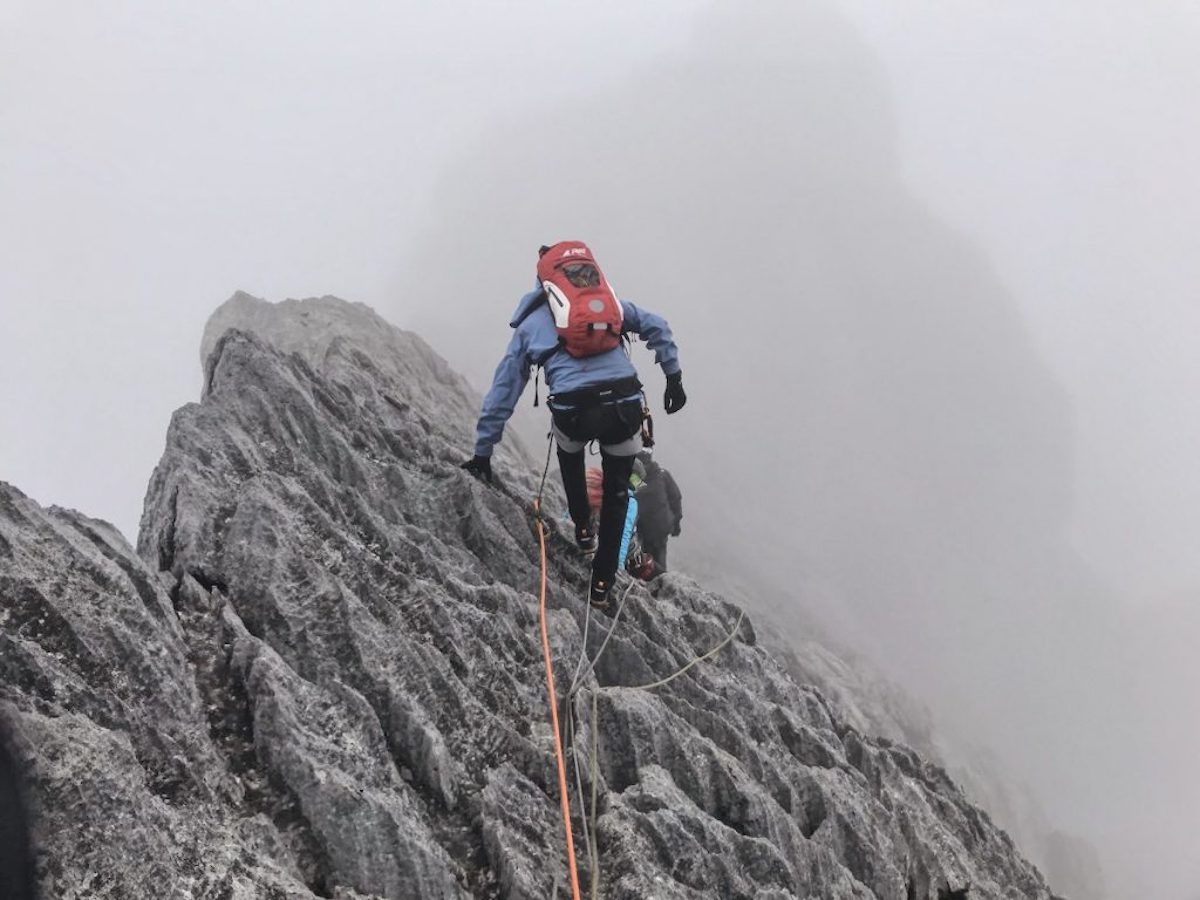
Training with weight on your back, such as hiking with a loaded backpack or wearing a weighted vest, is a practical and crucial way of preparing for high-altitude hiking because it mimics hiking conditions.
It provides a realistic simulation; carrying weight during training simulates the actual conditions of high-altitude hiking, where you’ll likely be carrying a backpack with gear, food, and water. This helps your body adapt to the specific demands of hiking with a load.
It is also a perfect chance to try out your backpack so you can become one with it; knowing how to tighten and loosen it on your hike and you will know your pockets and compartments like the back of your hand, which will come in handy when you’re at high altitude and want to grab your food or gear whilst under stress.
Hiking with your weighted backpack targets the specific muscles used in hiking, including the legs, core, and back, which are essential for carrying a heavy pack. Additionally, it improves balance and stability, which are crucial when navigating uneven terrain, especially under the additional weight of a pack.
Train on Sand or Hills Whenever Possible
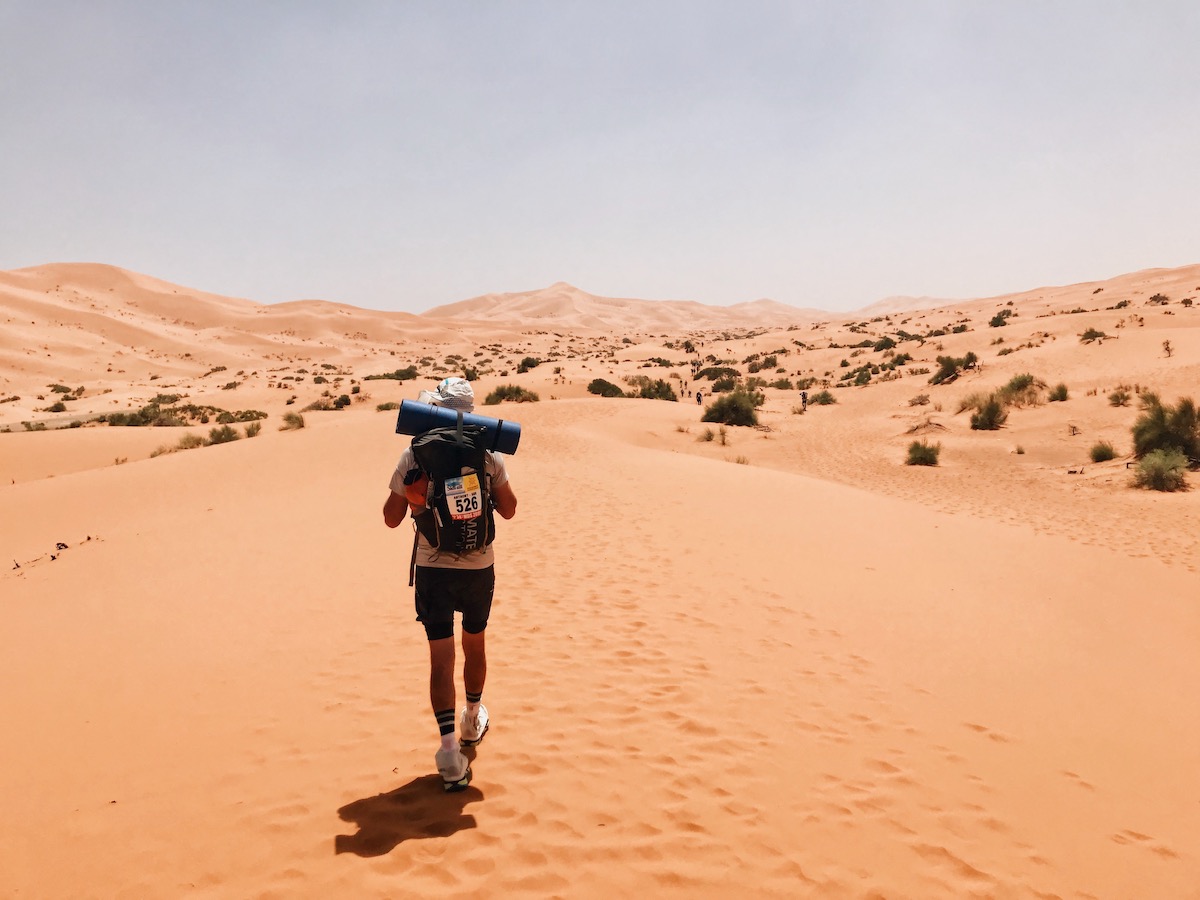
If you live in a flat part of the world where there are no hills or mountains you might not have the privilege of training for high altitude, let alone sand.
Staying in theme with the above tip, this adds a very real-life simulation to hiking at high altitude while increasing the intensity of your aerobic training you can also work on technique improvement such as foot placement on an incline and using your walking poles at different angles.
Move To a High Altitude City
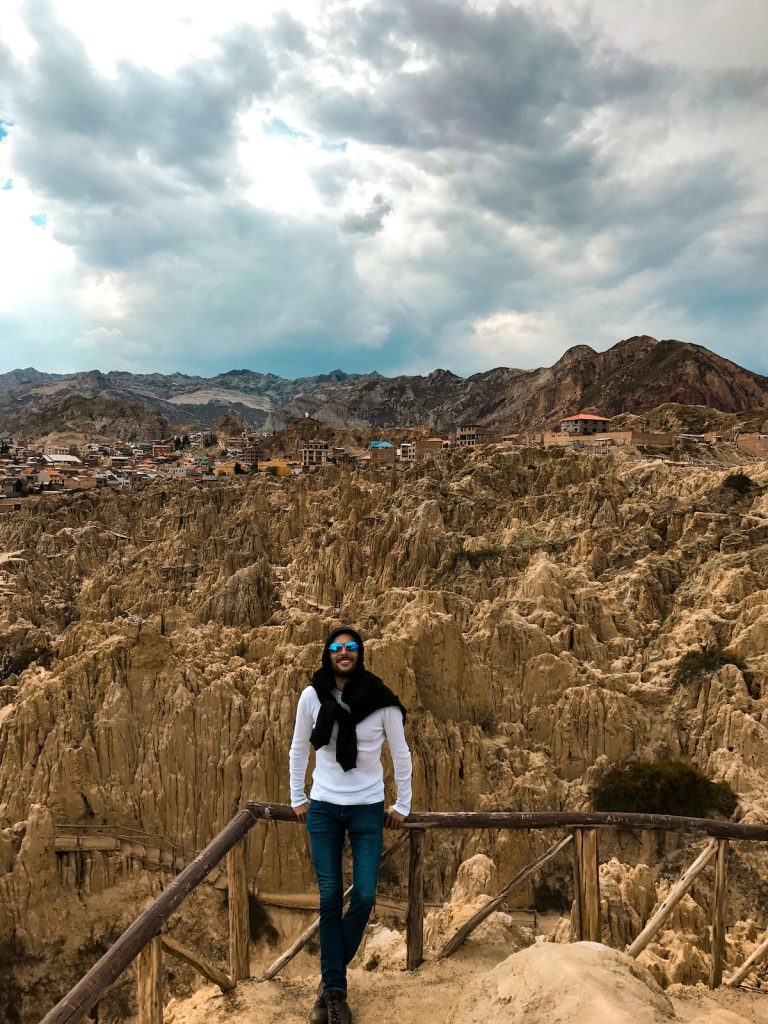
If the city that you live in is as flat as a pancake and you have no access to any hills or sand then you should maybe consider a temporary move to a city known for having high altitude.
I know this sounds extreme, but I am an extreme kind of guy and I don’t pretend to be anything else! And in my defence, if you are asking how to train for high-altitude hiking because you want to climb a cold, massive peak in the sky as your vacation of choice – then you may also be on the spectrum of extreme already!
If you have the financial resources to do so then definitely make the move to a city with a higher altitude. You want to give yourself every bit of possibility to summit the mountain of your desire and try your best to avoid altitude sickness, which could stand in your way of that cinematic mountain summit pose.
Gradual Exposure to Mountains
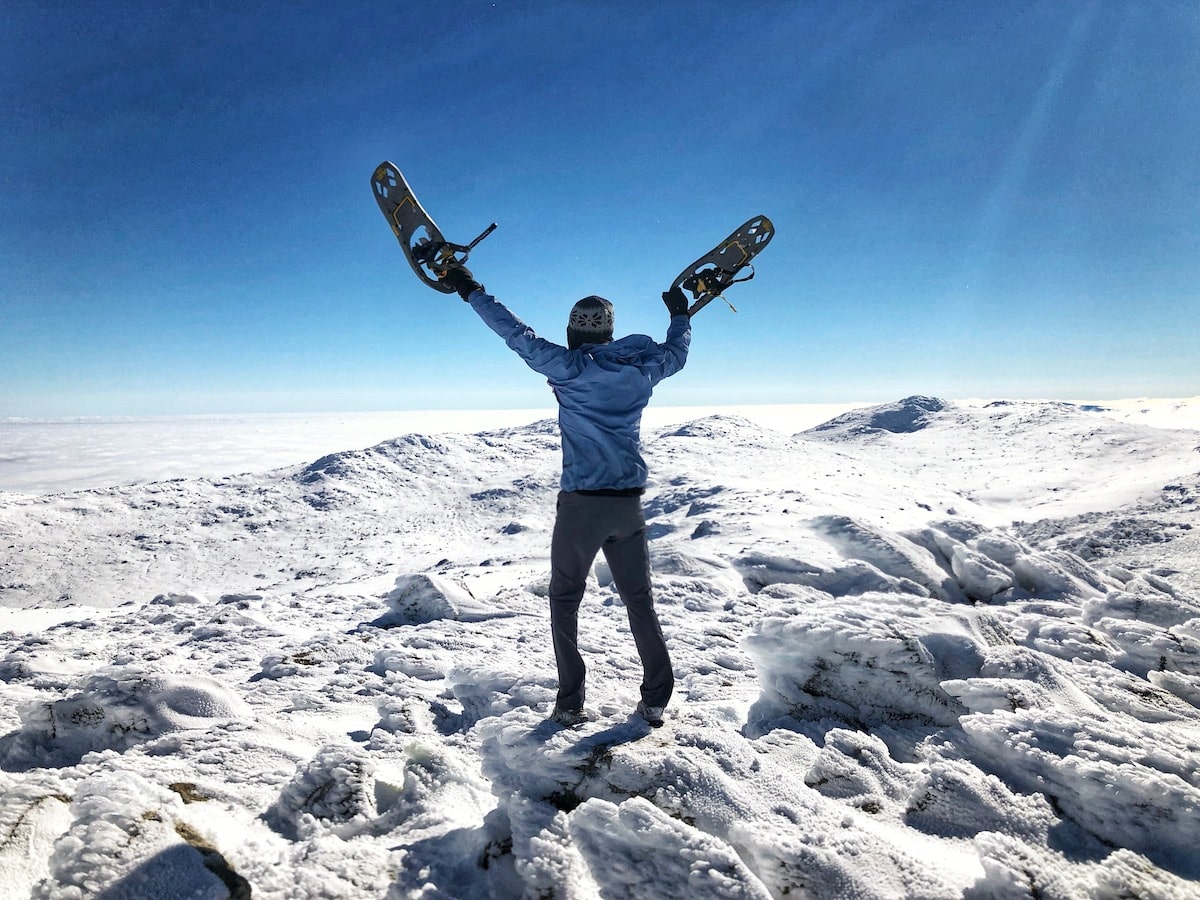
You should gradually take on higher altitudes and progressively go higher each time. This is my polite way of saying don’t bite off more than you can chew too early.
If you have never hiked at high altitudes, you have no idea how you will react. I have seen people get delirious in the mountains. A fair amount of them did not train accordingly beforehand, others did not progressively expose themselves to smaller mountains and the rest of them were just very unlucky.
It’s wise to take on the Everest Base Camp Trek before taking on Everest itself.
The principle of progressively challenging oneself with higher mountains is also essential. Start with a mountain that’s within your current acclimatisation level, let’s use a 3,000-meter peak as an example.
Once you’re comfortable and successful at this elevation, you can move on to higher peaks, like 3,500 or 3,700 meters, and so on. This step-by-step approach allows your body to adapt gradually and reduces the risk of altitude sickness and other altitude-related issues.
Sleep in an Altitude Tent
Training with an altitude tent, also known as a hypoxic tent, is a much lesser-known way to train for high-altitude hiking. These tents create an environment of low oxygen (hypoxia), simulating the conditions found at high altitudes. This type of training is beneficial for several reasons:
Benefits of Sleeping in an Altitude Tent
Acclimatisation to Low Oxygen Levels: The main advantage of using an altitude tent is to acclimatise the body to lower oxygen levels, similar to those found at high altitudes. This can help prevent or reduce the severity of altitude sickness, which includes symptoms like headache, nausea, and insomnia.
Increased Red Blood Cell Count: Sleeping in hypoxic conditions can stimulate the production of red blood cells and haemoglobin, improving the body’s ability to transport and utilize oxygen more efficiently.
Improved Aerobic Performance and Endurance: Training in a simulated high-altitude environment can lead to improved VO2 max, endurance, and overall aerobic performance, as the body adapts to working efficiently with less oxygen.
How They Work
Altitude tents work by reducing the percentage of oxygen in the air inside the tent. This is typically achieved using an altitude generator that filters oxygen from the air, creating a hypoxic environment.
The tents are designed to hold this low-oxygen air, allowing the user to experience hypoxia while sleeping or resting,
The hypoxic tent is typically designed to fit over a bed while you sleep. These tents come in various sizes to accommodate different bed sizes, from single to king-sized.
The altitude generator, a crucial component of the system, is set up nearby. This device filters oxygen from the air to simulate the lower oxygen levels found at high altitudes. Tubing is used to connect the generator to the tent. This allows the hypoxic (low-oxygen) air to flow into the tent.
The tent is then designed to be well-sealed to maintain a hypoxic environment. Zippers or other sealing mechanisms ensure that the low-oxygen air doesn’t escape.
The downside to sleeping in an acclimatisation tent is they can be a bit fiddly and average at around a whopping $2,699! I do have a friend who is working on a more user-friendly type of tent at a much lower cost, so stay tuned in my newsletter for the day those go on the market.
Learn Proper Breathing Techniques
Breathing exercises can strengthen the respiratory muscles, making them more efficient and resistant to fatigue, which is beneficial for high-altitude hiking, where breathing can become more laboured.
Techniques to Practice
- Diaphragmatic Breathing: This involves deep breathing using the diaphragm rather than shallow chest breathing. It maximizes the amount of oxygen taken in with each breath.
- Paced Breathing: This technique involves syncing your breathing with your steps while hiking, which can help in maintaining a steady pace and efficient oxygen usage.
- Altitude Simulation: Some athletes use devices that simulate high-altitude conditions to adapt their breathing to lower oxygen levels. This can be part of a more comprehensive altitude training regimen.
Wim Hoff has some interesting philosophies regarding breathing at high altitudes and also a lot of free breath-related content on his YouTube channel.
Have a Full Check-Up At The Doctors

Here you are learning all of the fun ways how to train for high-altitude hiking and I’m spoiling your fun by playing mum and telling you to go to the doctors as part of your training regime!
Seeing the doc for a full checkup before training for and embarking on a high-altitude hike is crucial for several reasons:
- Assess Overall Health: A doctor can assess your overall physical health to ensure you’re fit enough to undertake such a strenuous activity. High-altitude hiking can be demanding on the body, and it’s important to know if you have any underlying health issues that could be exacerbated by this activity.
- Identify Risk Factors for Altitude Sickness: Certain individuals may be more prone to altitude sickness, and a doctor can help identify these risk factors. This includes assessing your history of altitude sickness, if any, and discussing preventive measures.
- Evaluate Cardiovascular Health: High-altitude hiking puts significant stress on the cardiovascular system. A doctor can check for any heart conditions or hypertension that could be dangerous at high altitudes where oxygen levels are lower.
- Review Respiratory Function: The thin air at high altitudes can exacerbate respiratory issues. A checkup can reveal any existing respiratory conditions like asthma, which might need special management during the hike.
- Medication and Vaccination Advice: The doctor can review any medications you’re currently taking to ensure they won’t interfere with your hiking ability. They can also recommend any necessary vaccinations based on the part of the world you plan to hike in.
Get Insurance
Purchasing travel insurance is a must, but getting adequate insurance for high-altitude training is absolutely imperative.
It’s a story as old as time; the boy plans a dangerous thing, boy says he doesn’t need to pay for travel insurance, boy finds himself in danger and has an accident, boy finds himself in hospital, boy is stuck with an eye-popping, stressful hospital bill.
This is why ladies live longer, gents.
I was that exact boy, be smart and get high-altitude insurance for your climb.
When I climbed Mount Elbrus in Russia the company I climbed with took care of that for me but there re plenty out there if you want to DIY, SafetyWing Travel Insurance cover you for mountains up to 4,500 metres at a very reasonable price!
Embrace Your Genetics
The sad truth that isn’t often discussed enough when talking about how to train for high-altitude hiking is that if you did all of the above perfectly vs another person who did all of the above perfectly; if they had better genes than you for this particular environment, they would find life up there a lot easier than you.
I’m not talking about body fat, strength or cardio here; just the cold, hard fact that some people are more genetically predisposed to surviving (or even thriving) at high altitudes.
Take Kilian Jornet for example, the legendary ultrarunner who smashes records at high altitudes like it’s going out of fashion. Is he a hard-working individual with dialled-in training? Absolutely! He also has phenomenal genes for high altitude.
The man is a beast, there are a lot of beasts out there who push the boundaries in the fitness world, but not every one of those beasts is necessarily equal at higher altitudes.
In short, work out where you stand by tackling your first high-altitude hike after training optimally and hopefully, you’ll keep altitude sickness at bay.
Become as Fit as Humanly Possible
This one should be an absolute given, although I genuinely believe that most people who fail in their high-altitude pursuits underestimate the task at hand and do not push themselves adequately to give themselves the best chance of summiting.
I’ve lost count of how many times I’ve heard people boast that they’ve not trained that hard before an expedition and those are the folks who usually have to turn back.
I can not for the life of me understand this mindset and I implore you to not adopt the same way of thinking. High-altitude hiking can be hard and the higher you get it can become unpredictable; you should train like a man/woman possessed and be fully primed for action when you rock up for your high-altitude hike.
How To Train For High Altitude Hiking: Conclusion
As you can see from this pretty detailed article getting ready for hikes at high altitudes is pretty intense. If you are new to this weird and wonderful (and often heartbreaking and cold) world, I hope that I didn’t put you off with all of this information.
I genuinely believe that people are way more physically capable of pushing their limits than they think they are.
My aim here is to leave you with full confidence in how to train for high-altitude hiking and get you mentally and physically prepared for your adventure.
See you at the top!

